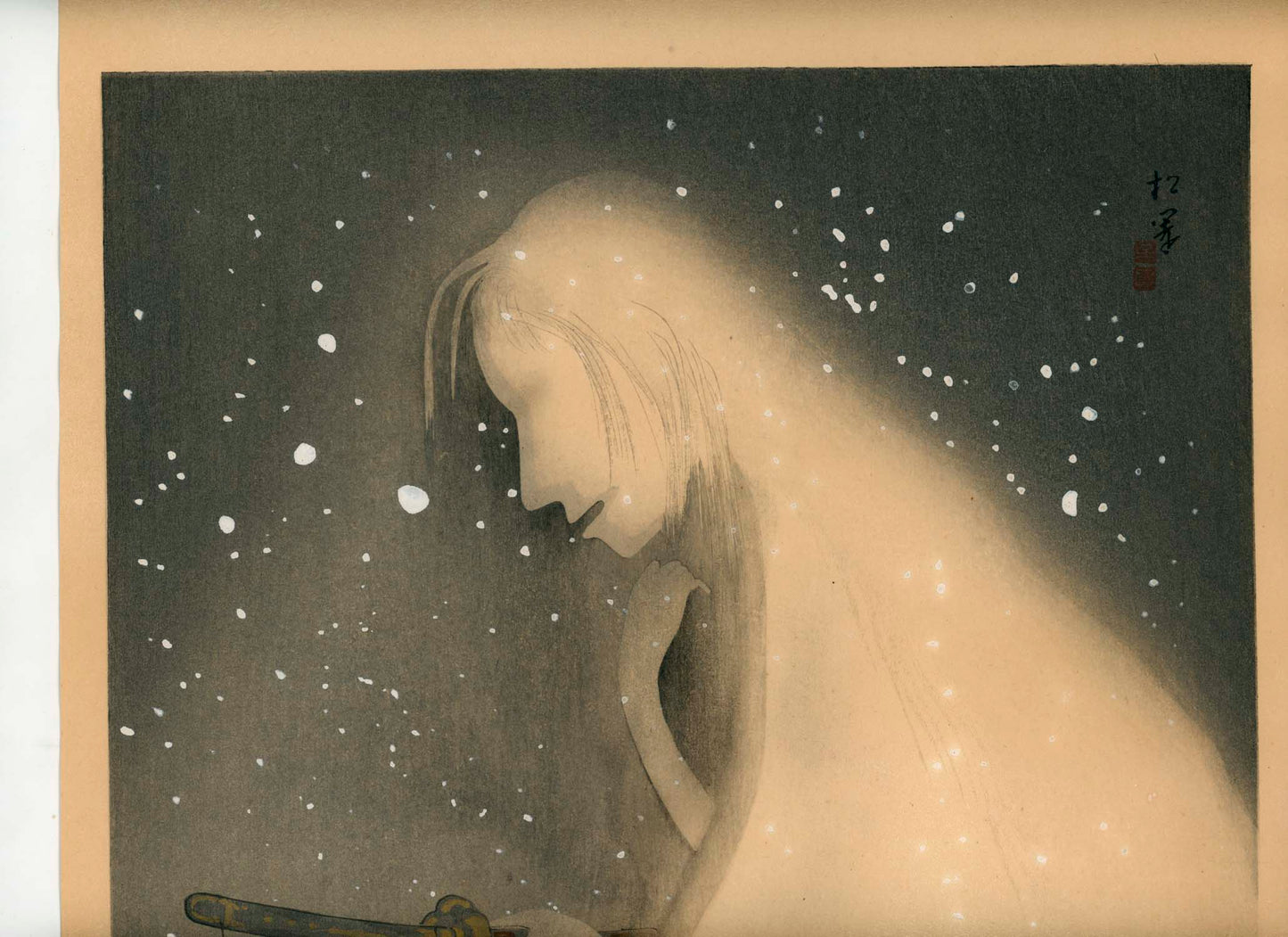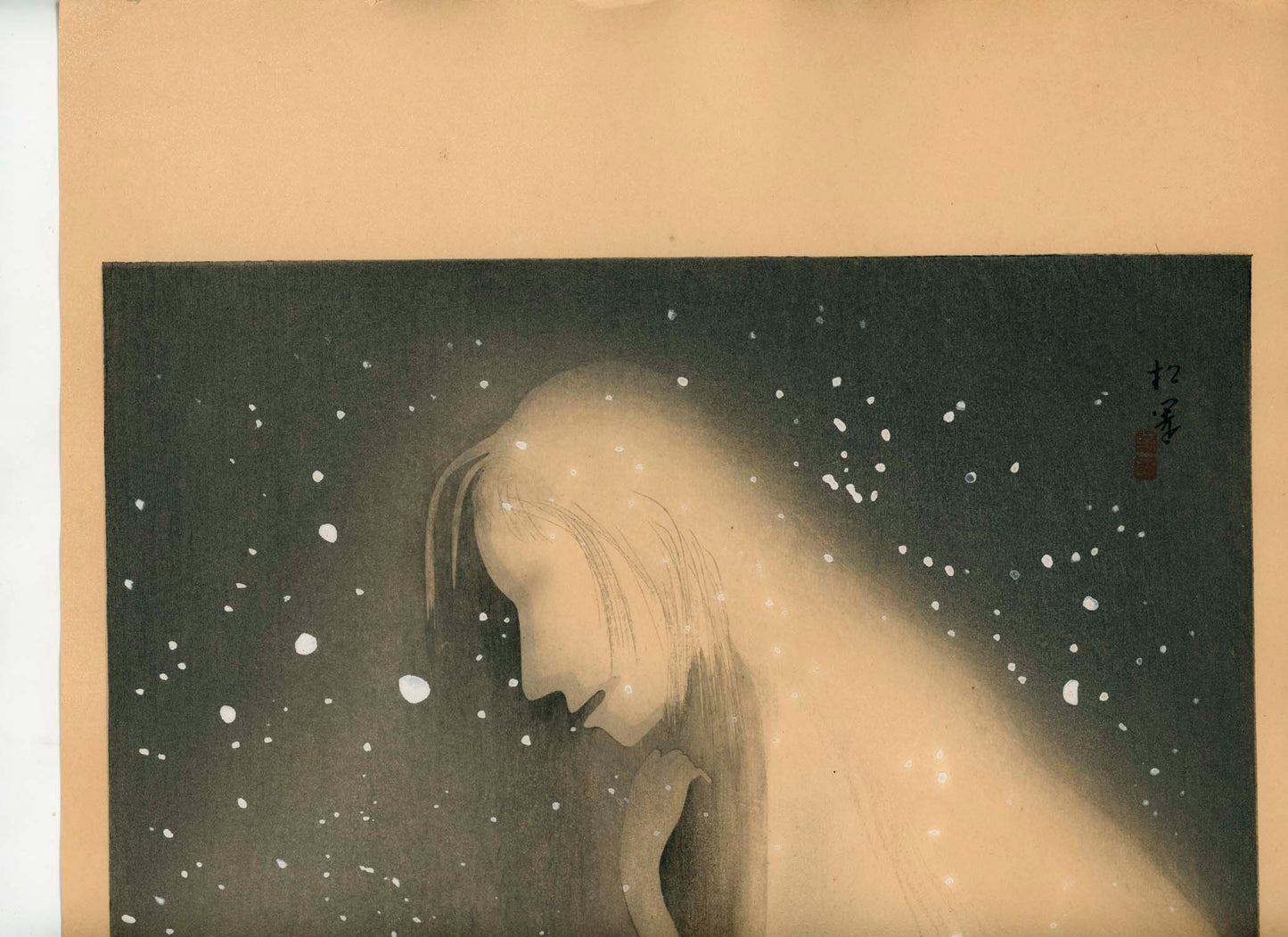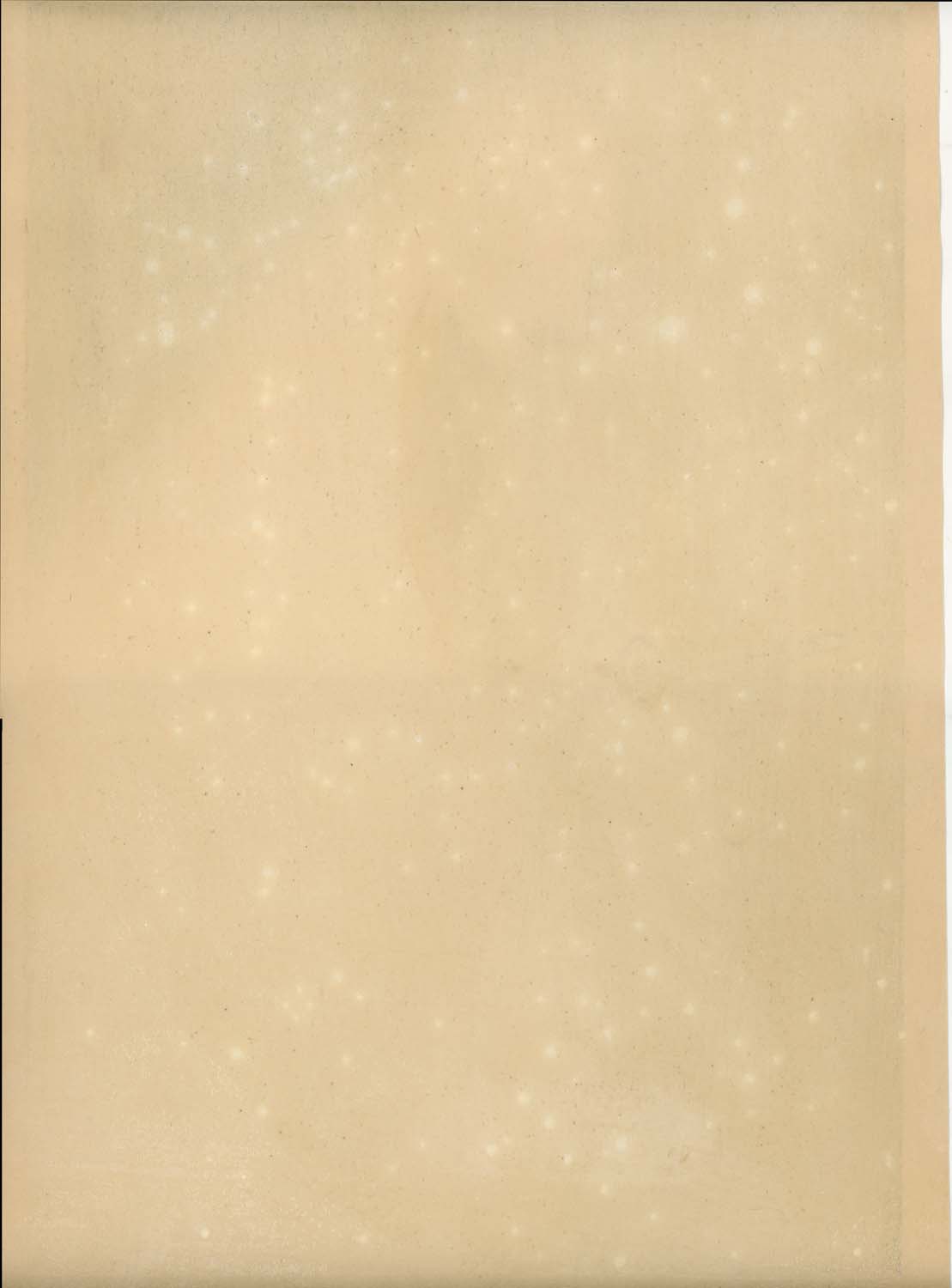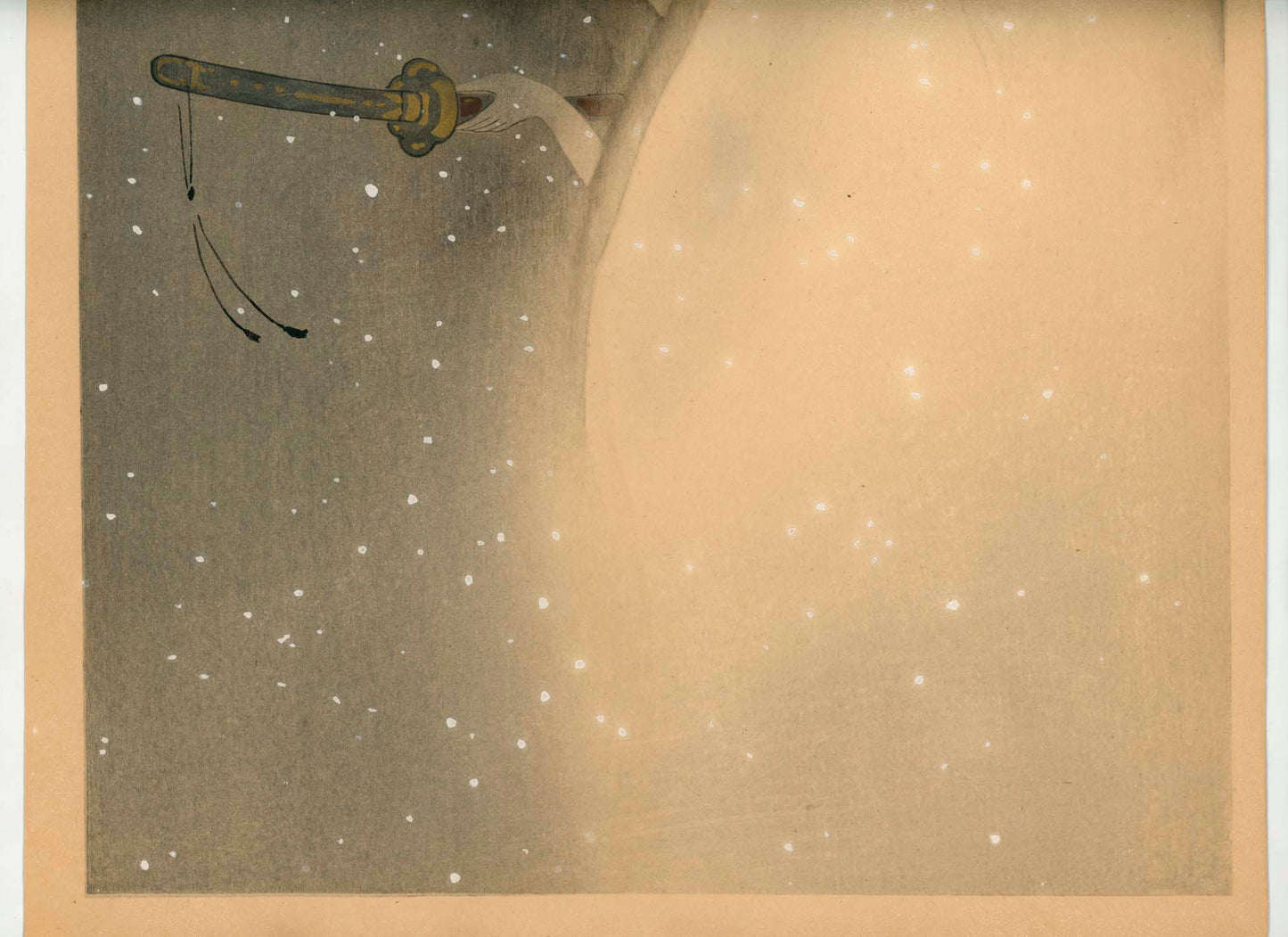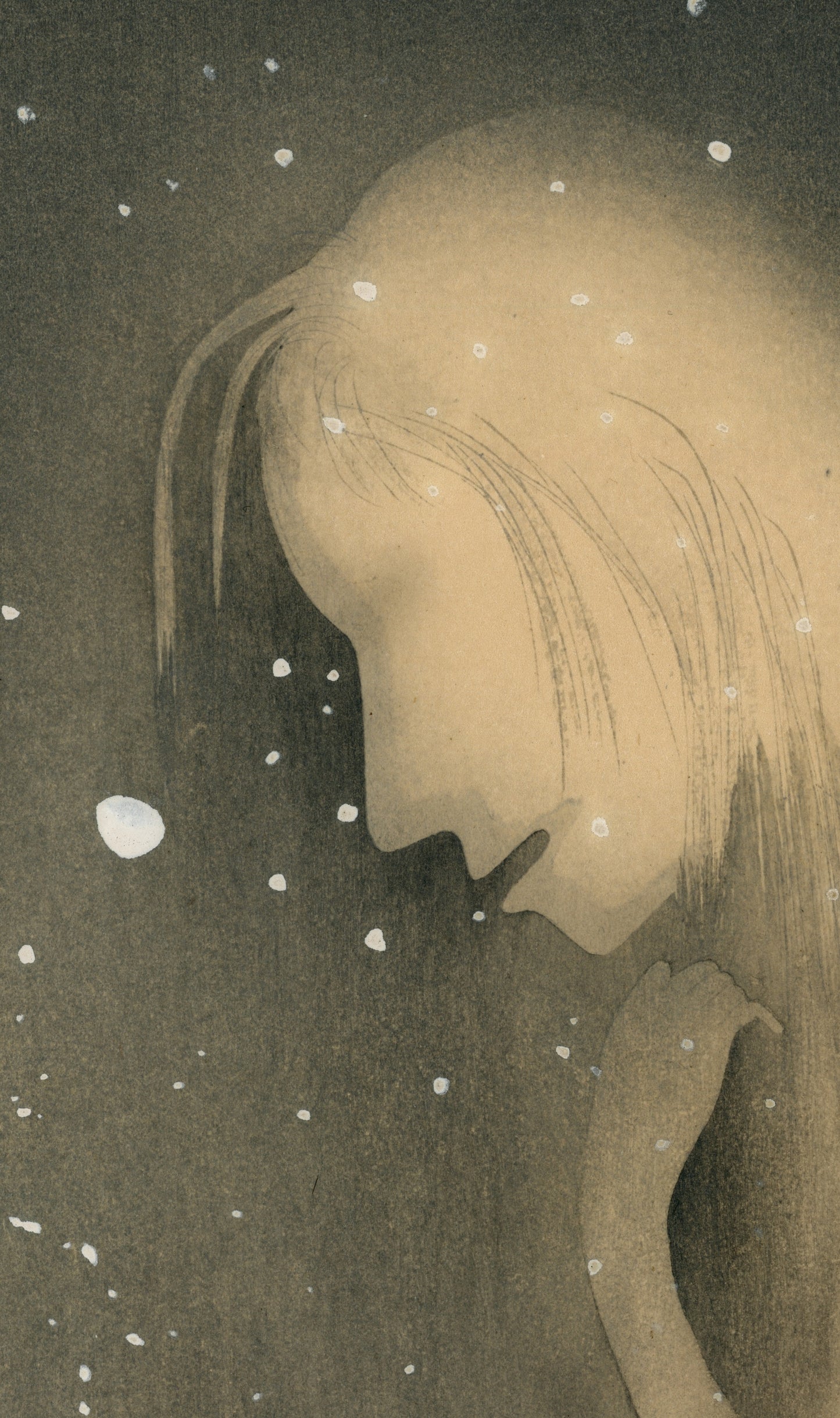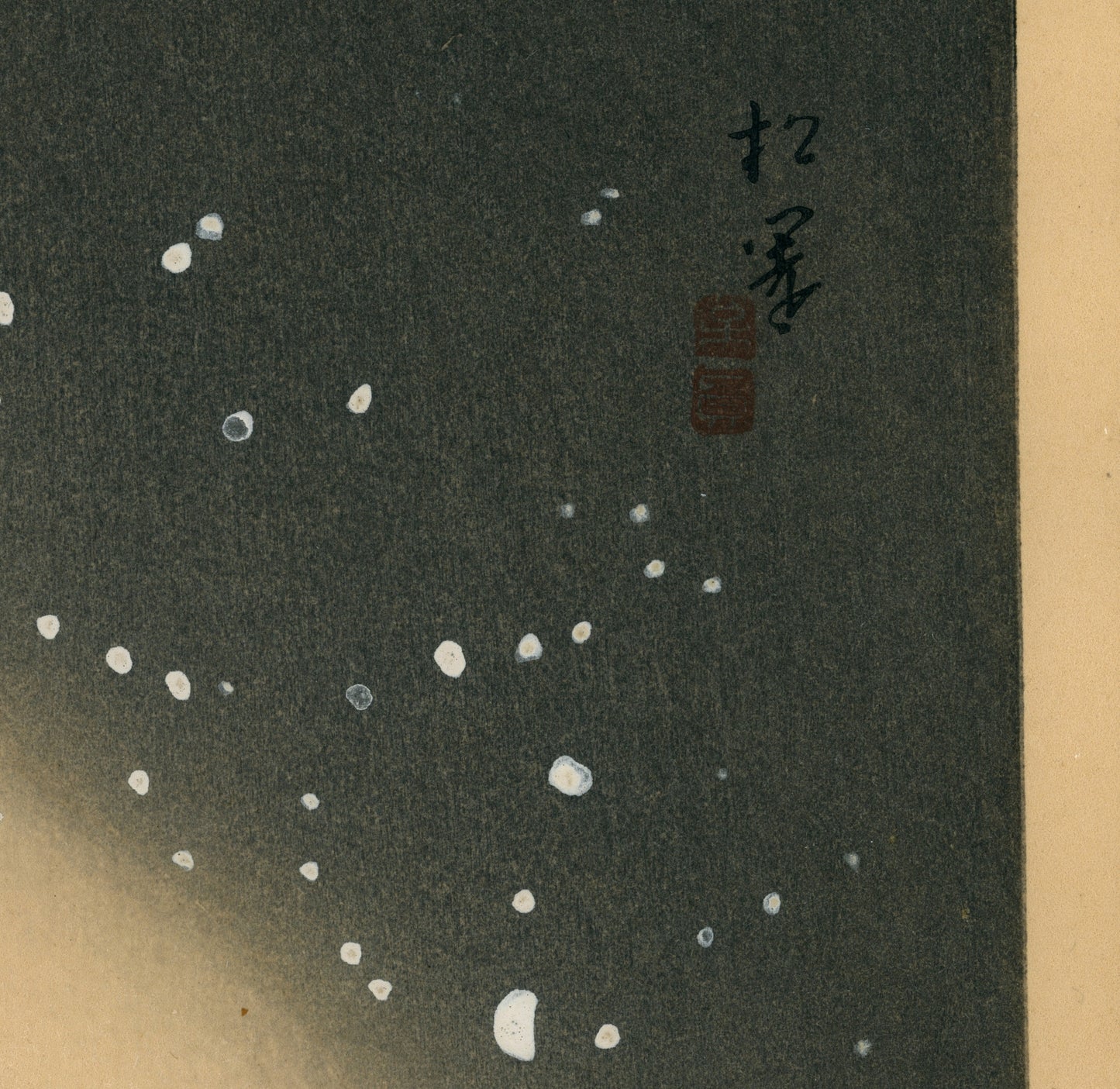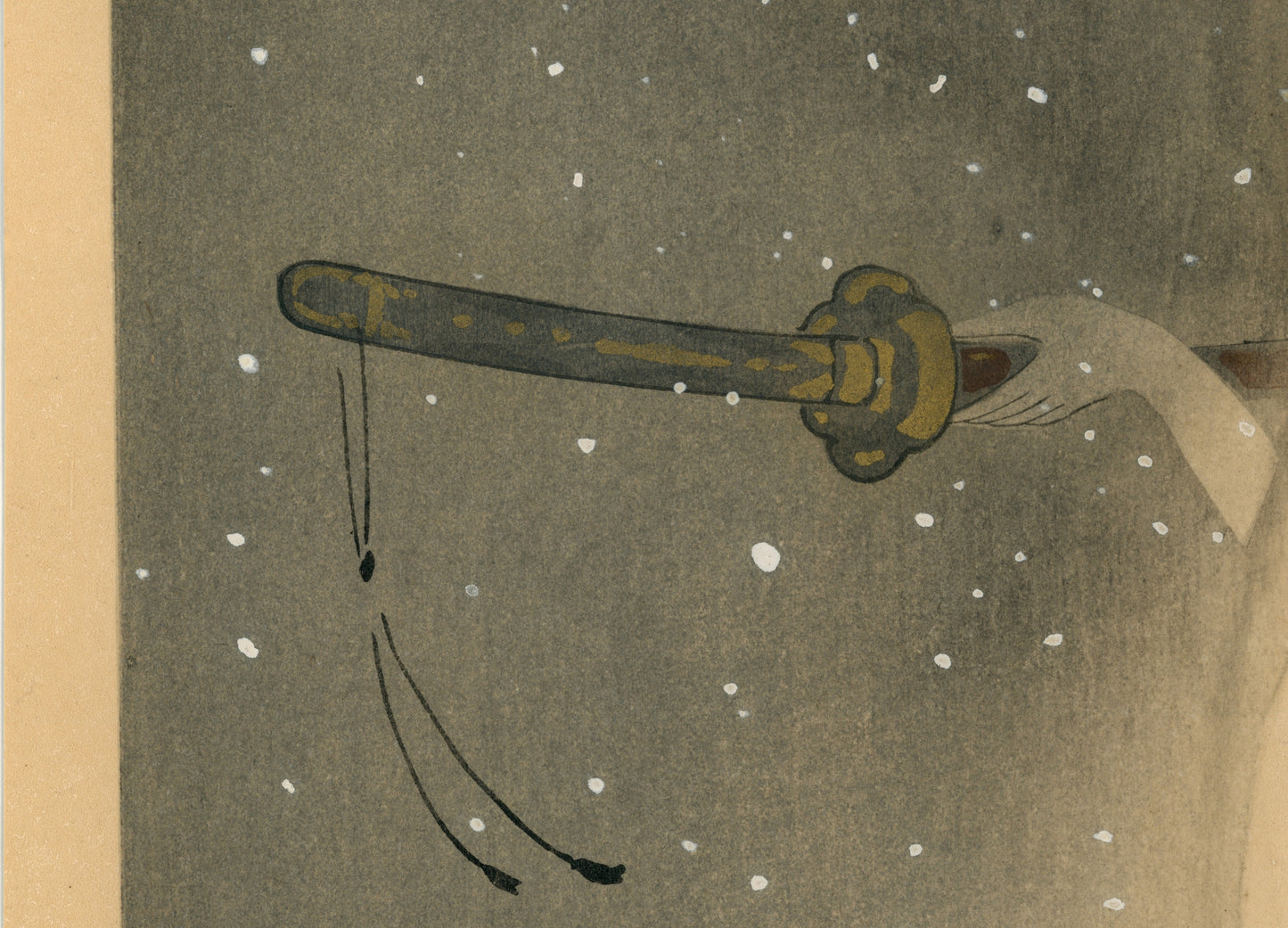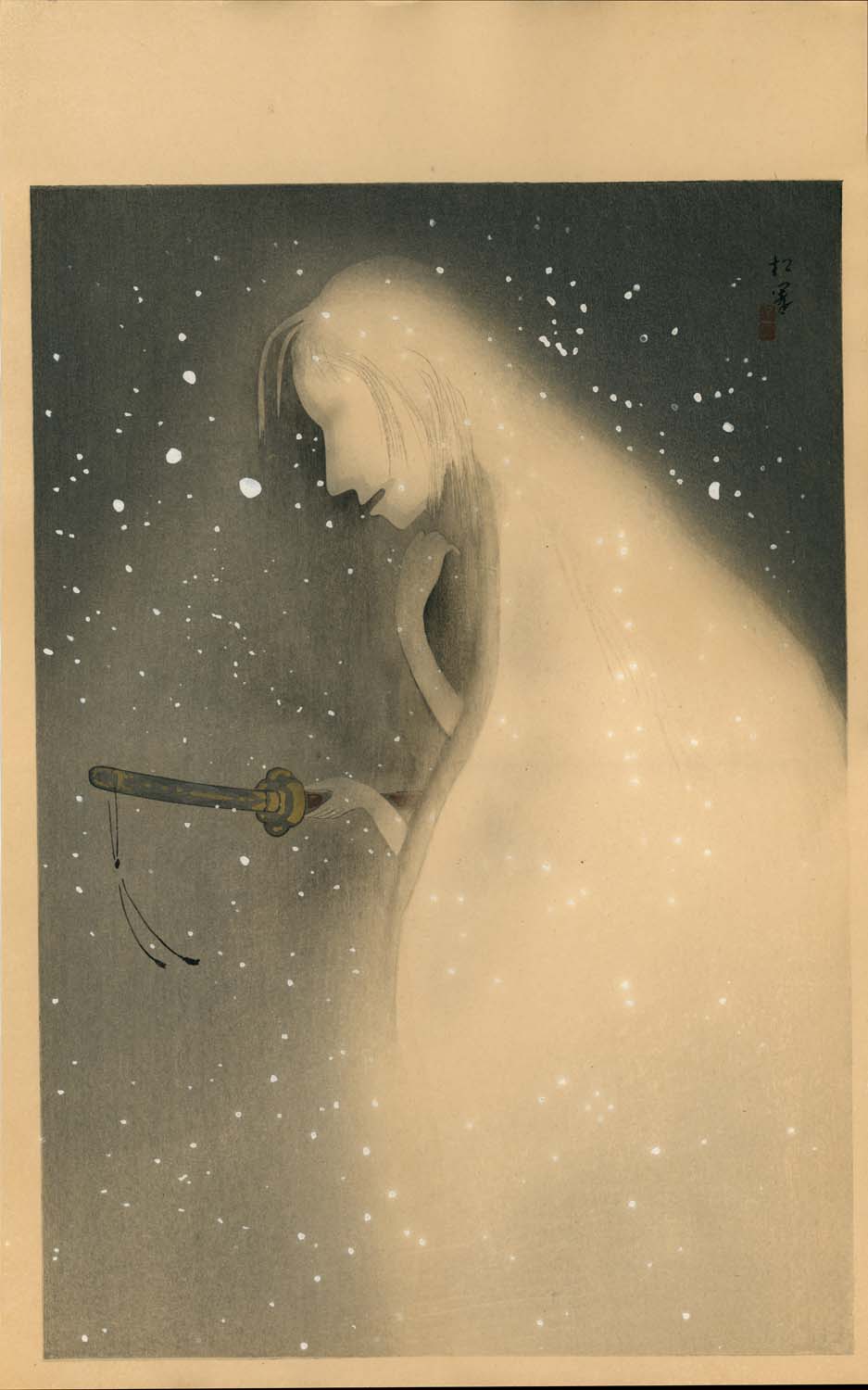Paperowl - Japanese Books & Prints
Uemura Shōen 上村松園 (1875–1949) 「雪女五枚羽子板」Yuki Onna Gomai Hagoita from 大近松全集付録 Dai Chikamatsu Zenshū furoku (Supplements of the Complete Works of Chikamatsu) Taishō 11–12 (1922–1923), woodblock print, ōban tate-e
Uemura Shōen 上村松園 (1875–1949) 「雪女五枚羽子板」Yuki Onna Gomai Hagoita from 大近松全集付録 Dai Chikamatsu Zenshū furoku (Supplements of the Complete Works of Chikamatsu) Taishō 11–12 (1922–1923), woodblock print, ōban tate-e
Couldn't load pickup availability
The Snow Woman (Yuki Onna) in the play Yuki Onna Gomai Hagoita, from the book Dai Chikamatsu Zenshū 大近松全集 雪女五枚羽子板の雪女
Rare print considering the limited edition of Dai Chikamatsu volumes.
Signed and sealed Shoen, Taisho, 1922
Color woodblock print on paper. Ink, gofun and gold paint. Dai-oban format. Signed top right Shoen with artist's seal. Yuki Onna (The Snow Woman), from the play Yuki Onna Gomai Hagoita, adapted from the book Dai Chikamatsu Zenshu (Woodblock Prints depicting Chikamatsu Monyaemon's collected works).
Uemura was renowned for her Japanese-style paintings of elegant Kyoto beauties in soft colors. She rarely painted female figures with subdued colors and hollows around their eyes, making “Yuki-onna” an exceptional piece.
SIZE of the sheet 46 x 28.5 cm (dai-oban)
Condition:
Superb impression, color and registration. No trace of foxing, no trimming, metallic pigments/gofun perfectly preserved. Museum-quality color fidelity
Uemura Shoen (1875-1949) was a highly regarded Japanese painter of the Taisho and early Showa periods. She was known for her portraits of women, which often depicted historical figures, literary heroines, and contemporary beauties. Shoen's works were characterized by their meticulous attention to detail and rich, vivid colors. She was also one of the few female artists to achieve widespread recognition in Japan during her lifetime.
Comprehensive info from the Lavenberg collection:
The print series commonly referred to as Supplements of the Complete Works of Chikamatsu (Dai Chikamatsu Zenshū furoku) was published between 1922 and 1923 as part of the celebration of the two-hundredth anniversary of the death of Chikamatsu Manzaemon (1623-1724), perhaps the greatest dramatist in the history of the Japanese theater. Each design illustrates a scene or character from one of Chikamatsu’s famous works. The series consists of eighteen prints. Each print was designed by a different and well-established nihonga artist including Kitano Tsunetomi (1880-1947), Ishikawa Toraji (1875-1964), Yamamura Toyonari (1885-1942), Kaburagi Kiyokata (1878-1972) and two important female painters of the period, Shima Seien (1892-1970) and Uemura Shoen (1875-1949). Chikamatsu wrote over one hundred plays, most of which were written for the bunraku or puppet theater.
The blocks for the prints from this set were carved by Yamagishi Kazue 山岸主計 and printed by Nishimura Kumakichi 西村熊吉. Designs from the set are illustrated both in The New Wave: Twentieth-century Japanese prints fromthe Robert O. Muller Collection, Amy Reigle Stephens, BambooPublishing Ltd, London & Hotei-Japanese Prints, Leiden, 1993 and The Female Image: 20th Century Prints of JapaneseBeauties, Amy Riegle Newland and Hamanaka Shinji, Abe Publishing Ltdand Hotei Publishing, 2000. Many of the designs in the set have a printed gray border, reminiscent of the brocade borders found on hanging scrolls. In addition, many of the designs have deluxe highlights, including embossing, gofun, mica, and metallics.
The prints were issued as a supplement to a set of sixteen volumes of his work titled Dai Chikamatsu Zenshū, published between 1922 and 1925 by Dai Chikamatsu zenshū kankōkai 大近松全集刊行会 (the Complete Work of Chikamatsu Publishing Association). Scholten Japanese Art on their website notes that the prints were issued on a monthly basis starting in April 1922. I have seen mentioned that they were sold by subscription, but cannot recall the source.
The number of times each print was produced and the number of prints in each production is unknown, but there appears to be at least two different printings for each print, one which has the names of the printer and carver in the bottom margin in kanji, the other without that notation. Variations in coloration also are known for some prints, again, indicating multiple printings.
Museum comparison:
An identical print is in the collection of the Museum of Fine Arts, Boston accession number 59.840.
I should note that both versions linked above are trimmed strikes.
Last known appearance on the market was at Zacke's in 2023 when was sold @ 3300 euro in auction
Share

